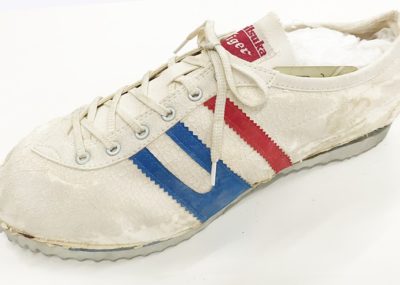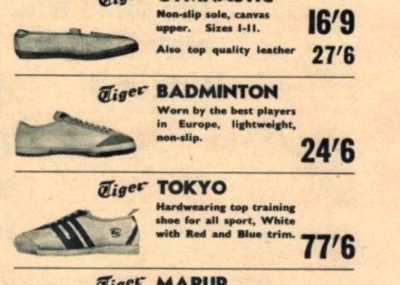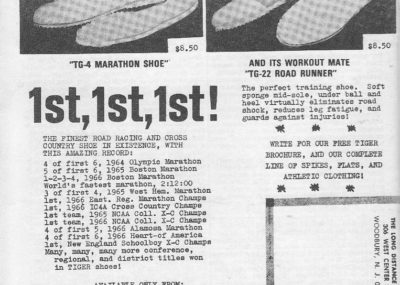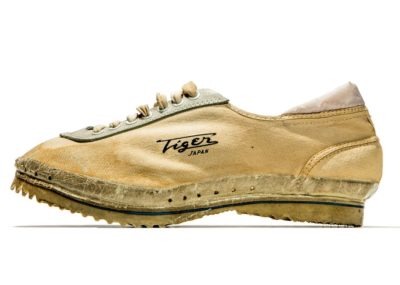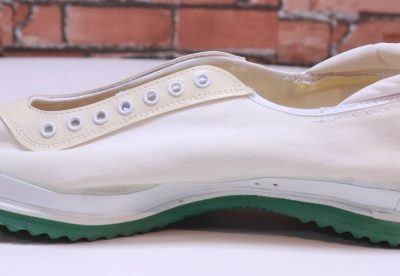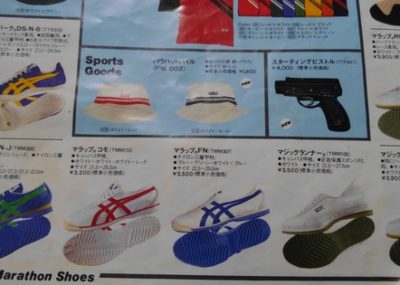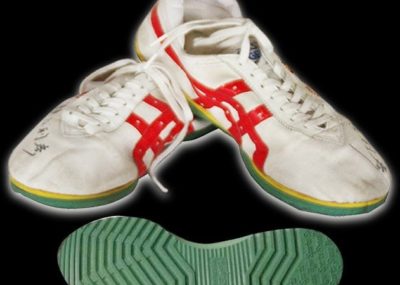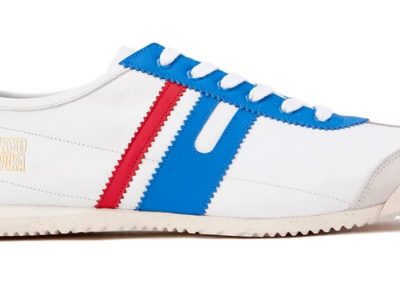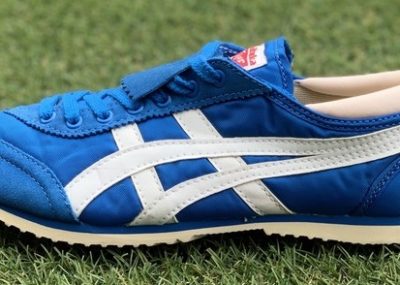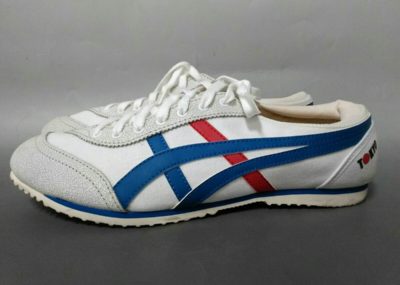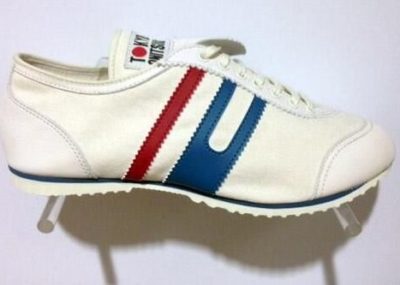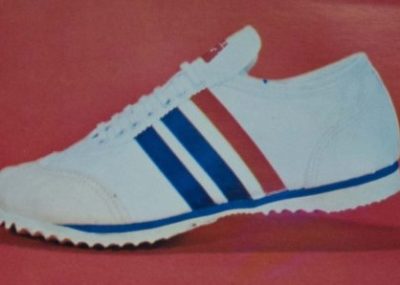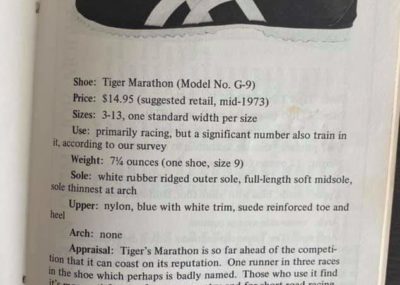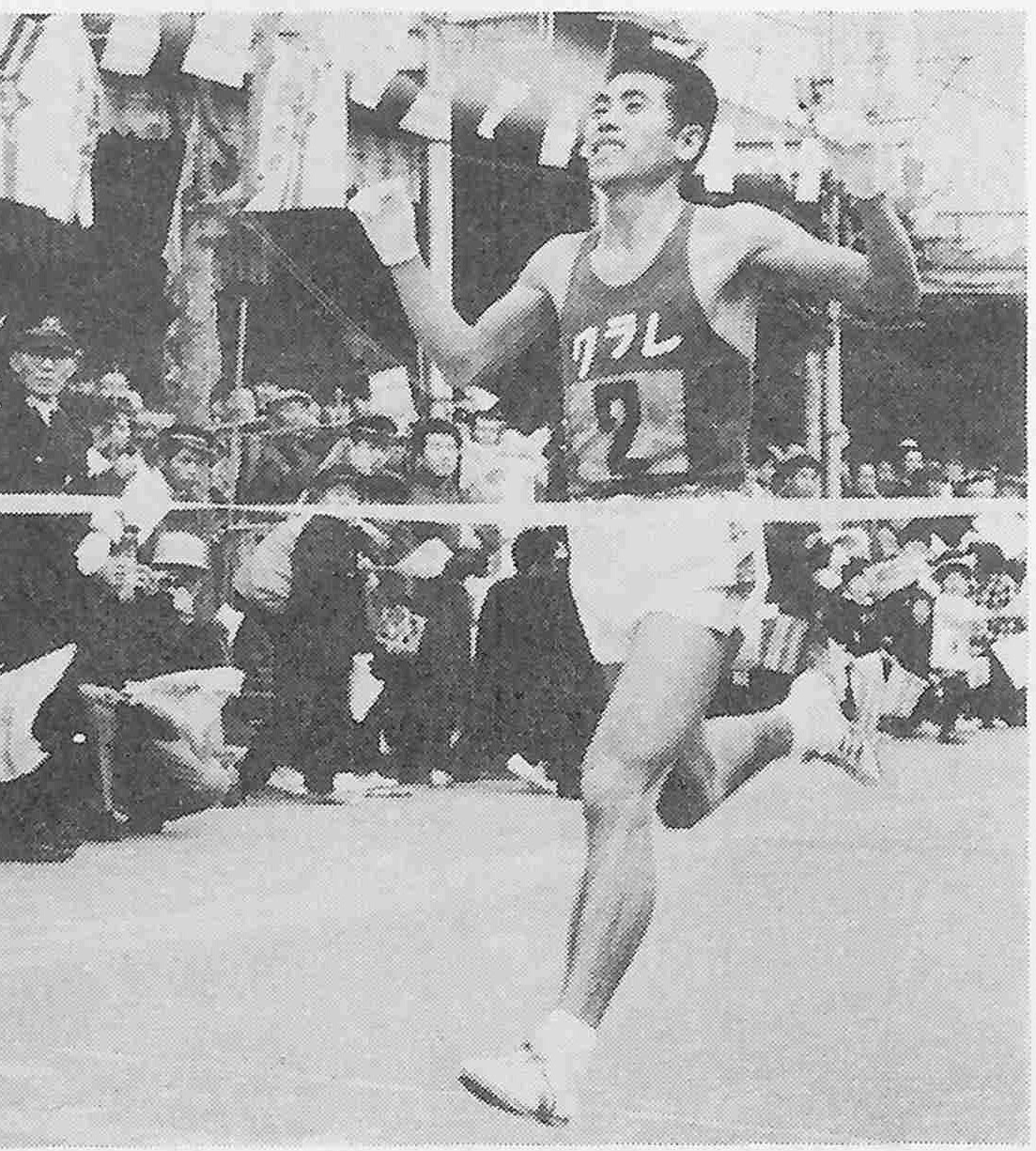
17-Feb-1963 – Beppu-Ōita Marathon – 2:15:15.8 – Onitsuka Tiger Super Marup
Date of birth: 4-Jan-1935
Nationality: Japanese
World Record Duration: 3 months, 29 days
The athlete:
After switching to running in his youth, Toru Terasawa shifted his focus to the marathon in 1959. The results came immediately, with a 3rd place finish in his first competitive race at the 1960 Fukui Marathon. After participating in a training camp in New Zealand in preparation for the 1964 Olympics, Terasawa would take his first victory at the 1962 Asahi International Marathon. He set a time of 2:16:18.4 in the process, which was the new Japanese national record.
It would be the first of many victories, Terasawa having already started training for selection by the Japanese team for the 1964 Olympics. Come February 1963, at the Beppu-Ōita Marathon, Terasawa set his new personal best. It was nothing less than the new world record. Terasawa couldn’t convert this pace into Gold, finishing in 15th at the Olympic Marathon.
He considered retiring, but proceeded to win the Asahi International Marathon later that year, again setting the new Japanese marathon record in the process. He would find yet more pace and lower the Japanese marathon record once more at the 1965 Beppu-Ōita Marathon. Many more victories came, with Terasawa securing his last marathon win at the 1969 Shingo Marathon. After hanging up his shoes, he turned his efforts to training the next generation of Japanese runners.
The shoes:
Identifying the shoes he wore is relatively straightforward. From the picture we have of his victory from 1963, albeit grainy, we can see the three stripes on the midfoot of the shoe, with the first two joined at the bottom.
This marks it out as the Onitsuka Tiger Super Marup, one of the most popular racing flats of the day. It was the latest development of the Marup, which Onitsuka Tiger first launched in 1957. What made the Marup so effective was the rubber sponge midsole that the company had first introduced in 1956.
It provided far more cushion compared with other contemporary running shoes, but the Super Marup took things further when it was introduced in 1959. It applied the airflow lessons from development of the Magic Runner model, released the same year, which used strategically placed holes to help reduce blistering during distance running. Incredibly, the Magic Runner was still available to purchase in updated form at least until 1980.
The shoe was closely linked with another legend of Japanese distance running, Kenji Kimihara, who wore the model throughout his competitive career. This included victory at the 1966 Boston Marathon and silver at the 1968 Olympics. At the 1972 Olympics, Kimihara proved the formula of the Magic Runner was still competitive, finishing fifth and only minutes behind the podium finishers.
As for the Marup series, it also saw continuous improvement, including the introduction of synthetic leather known as Clarino, made by the Japanese company Kuraray. Clarino leather was at first found to be quite stiff, and this was the first time it was used for an athletic shoe. It was first tested in competition by Terasawa, including during his win at the 1965 Beppu-Ōita Marathon, which as noted above resulted in him setting the new Japanese marathon record.
An updated version of the Marup, which was now known in some markets as the Marathon, was released in the mid-seventies that eventually evolved into the ASICS Sortie, the lower profile Marup was still being released through to the mid-eighties. It was the shoe worn by Shigeru So in 1978 to again capture the marathon world record for Onitsuka Tiger. It was also on the feet of the legendary Toshihiko Seko until the 1984 Olympics, more than two decades after its debut.
Although Seko was unable to convert his winning pedigree into an Olympic medal, he was still winning races in the Marup through to 1983, including the Tokyo Marathon where he won in 2:08:38, at that point the second fastest marathon even run. His victories in the traditional racing flat also included four wins at the Fukuoka Marathon and notable the 1981 Boston Marathon.
Onitsuka Tiger, relaunched by ASICS in 2002, would bring back the Super Marup again in 2004 to coincide with the Athens Olympics, with overlays similar to the first version from 1959 while featuring more modern Tiger Stripes. As for the original stripe pattern, in 2020 Onitsuka Tiger released the Delegation 64, which uses the same design sported on the Super Marup.
References:
the True Story of Onitsuka Tiger (book)
https://en.wikipedia.org/wiki/Toru_Terasawa
https://en.wikipedia.org/wiki/Toshihiko_Seko
http://www.nosugar.co.uk/index.php
https://www.runnersworld.com/runners-stories/a26415741/asics-founder-kihachiro-onitsuka/
https://corp.asics.com/en/about_asics/history
https://lydiardtrainingandacademy.medium.com/runners-from-the-land-of-rising-sun-part-2-lydiard-connection-2da3f9da1b84
https://www.lydiardacademy.org/photo-gallery
https://en.wikipedia.org/wiki/Toshihiko_Seko
https://en.m.wikipedia.org/wiki/Kenji_Kimihara
